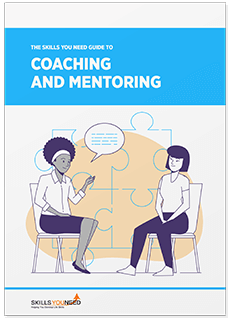6 Modern Teaching Methods
for Student Success
See also: Teaching Skills
Teaching methods have evolved significantly over the years. Gone are the days when students were expected to sit in silence and learn passively through memorization and regurgitation of facts. Instead, modern styles of teaching favor a more interactive approach where the student is actively involved in their learning through activities, discussions, collaborative projects, and the encouragement of critical thinking. These activities are all designed to engage students’ minds more fully and cultivate a deeper understanding of the subject matter at hand.
In addition to the above, the development of new teaching methods has in no small way been influenced by events in recent years. With advancements in digital technologies and a global pandemic that forced educators to find new and alternative ways to meet their students' educational needs, the pedagogical landscape has undergone significant transformations.
This article will explore some of the most effective modern teaching methods which are being used today to enhance and promote student learning.

1. Kinesthetic Learning
Also known as tactile learning, kinesthetic learning is a hands-on style of teaching that encourages students to engage their sense of touch by physically interacting with their subject matter. Rather than lengthy explanations or descriptions in a book, students can get a real feel for how something works through building, testing, and witnessing it for themselves.
This practical approach to teaching goes beyond pure theory and is best suited to subjects that require physical manipulation, dexterity, and experiential learning. For this reason, kinesthetic learning can be particularly advantageous in subjects such as science, geography, art, music studies, and vocational subjects like woodwork or electrical work.
You can find out more about modern techniques and best practices such as those taught on the level 5 det course to help you to enhance your performance as a teacher.
2. Inquiry-Based Learning
This method of teaching makes a swift departure from traditional styles of simply imparting knowledge to students, and instead, encourages them to ask questions and investigate in order to find the answers themselves.
By engaging their critical thinking and problem-solving faculties through the use of open-ended questions, inquiry-based learning can ignite the student’s natural curiosity and foster an independent spirit where they seek out information and evidence to support their understanding and draw conclusions. This approach can empower students beyond the classroom, by helping them develop their own powers of research, analysis, and exploration, thereby cultivating a lifelong love for learning.
3. Differentiated Instruction
This approach to teaching focuses on the individual needs of the student and tailors instruction based on their interests, abilities, and learning styles. As opposed to a one-size-fits-all approach to teaching, differentiated instruction recognizes the unique strengths and areas of growth each individual has as well as their learning pace to create an individualized education plan to maximize their overall learning experience.
As the emphasis is on the student, differentiated instruction styles are geared towards one-to-one learning or teaching students in small groups instead of lectures and larger group settings. Examples of differentiated instruction include the following:
- Provide reading material based on students’ reading levels
- Customize vocabulary and spelling lists to match students’ skills
- Allow students to work at their own pace with reasonable guidelines
- Form small groups based on students' learning needs or interests
- Allow different ways of assessing students’ understanding such as presentations or projects.
4. Game-Based Learning
Game-based learning, or gamification, is a modern teaching technique that recognizes the power that games play in the lives of children and young people and capitalizes on their ability to engage and inspire students in the learning process.
By incorporating game-based features such as characters, leaderboards, challenges, and rewards into educational content, teachers can encourage student participation and enthusiasm for learning while also nurturing important 21st-century skills such as digital literacy and confidence in navigating new technologies.
This form of teaching lends itself well to the online environment through educational video games, online simulations, and virtual reality experiences, and is a medium that can offer immediate feedback, results, and rewards to students making it an exciting, and immersive experience compared to traditional means of learning. Through their active participation and enjoyment of the game, students are motivated to think critically, solve problems, and learn new subjects and skills in a fun and entertaining way.
5. Collaborative Learning
Through collaborative learning, students work together in small groups towards a shared goal. By encouraging cooperation, communication, and teamwork this style of teaching allows students to engage with each other, share ideas, solve problems, and complete projects in a collaborative way which facilitates their learning.
In addition to enhancing skills such as communication, teamwork, and critical thinking, collaborative learning also aids students in the development of other valuable life skills that are beneficial outside of school. These include relationship-building, active listening, respect for diverse opinions and perspectives, conflict resolution, and adaptability.
Collaborative learning can prepare students beyond their academic studies by equipping them with valuable skills that can assist them in a professional setting and more generally throughout their life.
6. Experiential Learning
Experiential learning is a teaching style that emphasizes hands-on, practical experiences to facilitate learning and understanding in students. By actively engaging in real-world experiences, students are less likely to become bored or distracted and are no longer just passive recipients of information as their subject matter becomes practical rather than simply theoretical.
Through direct experience, students are more likely to remember and understand what they learn which promotes their critical thinking and problem-solving skills, as they are able to apply their knowledge to solve real-life problems. Experiential learning also cultivates transferable skills such as communication, teamwork, adaptability, and leadership skills as students collaborate on projects, engage in group discussions, and navigate real-world scenarios.
Examples of experiential learning include field trips, simulations, role-playing activities, internships, community service, and hands-on experiments. By bridging the gap between theory and practice, collaborative learning equips students with both subject-specific knowledge and the practical skills needed for success in their future endeavors.
Further Reading from Skills You Need
The Skills You Need Guide to Coaching and Mentoring
Coaching and mentoring require some very specific skills, particularly focused on facilitating and enabling others, and building good relationships. This eBook is designed to help you to develop those skills, and become a successful coach or mentor.
This guide is chiefly aimed at those new to coaching, and who will be coaching as part of their work. However, it also contains information and ideas that may be useful to more established coaches, especially those looking to develop their thinking further, and move towards growing maturity in their coaching.
Endnote
As these six modern methods demonstrate, the world of education continues to evolve and adapt to meet the changing needs of students and make use of advancements in technology which can enhance the teaching experience. By exploring new ways to equip students with the skills and knowledge they need to succeed, those responsible for educating them can play an important and valuable role in shaping the future of education.


